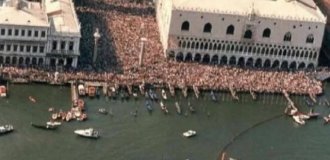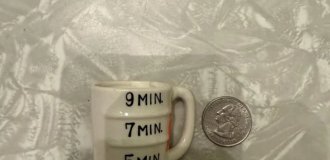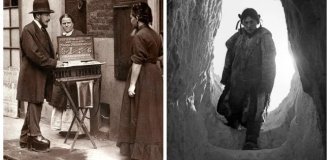Amsterdam Archipelago: life in the middle of the ocean (8 photos)
Two tiny islands located almost in the center of the Indian Ocean are known only to geography buffs. Meanwhile, in their uninhabited fate there were quite a lot of events worthy of a whole story with a tragic past and a harsh present. 
Amsterdam Island is almost circular in shape
The archipelago includes the island of Amsterdam itself and its “younger brother” the island of Saint-Paul, which lies a hundred kilometers to the south. These are two rocky and rather inhospitable pieces of land, which are difficult to get to because they are of volcanic origin and rise like a monolith among the ocean waves. The island of Amsterdam has almost no bays where you can drop anchor. On the contrary, the island of Saint-Paul has a magnificent lagoon, the shores of which, however, look like the walls of a funnel with a steep angle of 50°. In fact, this is a funnel, since it is a caldera of an ancient volcano, the eruption of which is responsible for this island with an area of 8 square kilometers. 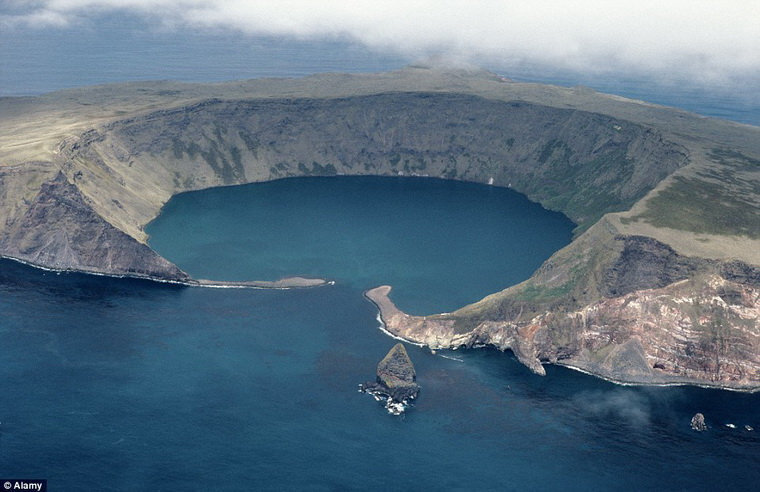
Saint-Paul Island and its caldera/
Amsterdam and Saint-Paul are located in the southern Indian Ocean. If you look at the map, you get the impression that they are located almost in its very center. It is not so far from the equator and one can assume that a tropical climate should reign on the islands. But no, not only is it not tropical, but it’s not even temperate. The archipelago is often classified as a subantarctic island. It is not at all hot here - the average temperature of the summer month (February) does not exceed 17°C, and the coldest month (July) is 11°C. So in winter and summer the islands experience almost the same temperature, quite acceptable for life.
Except she's not here. The island of Saint-Paul is completely uninhabited, and Amsterdam is home to the French scientific station Martin de Viviers with a permanent population of 40 people. But about the modern everyday life of the Amsterdam archipelago a little lower, and first a little history of these two seemingly faceless and lost islands.
In honor of the ship and the saint 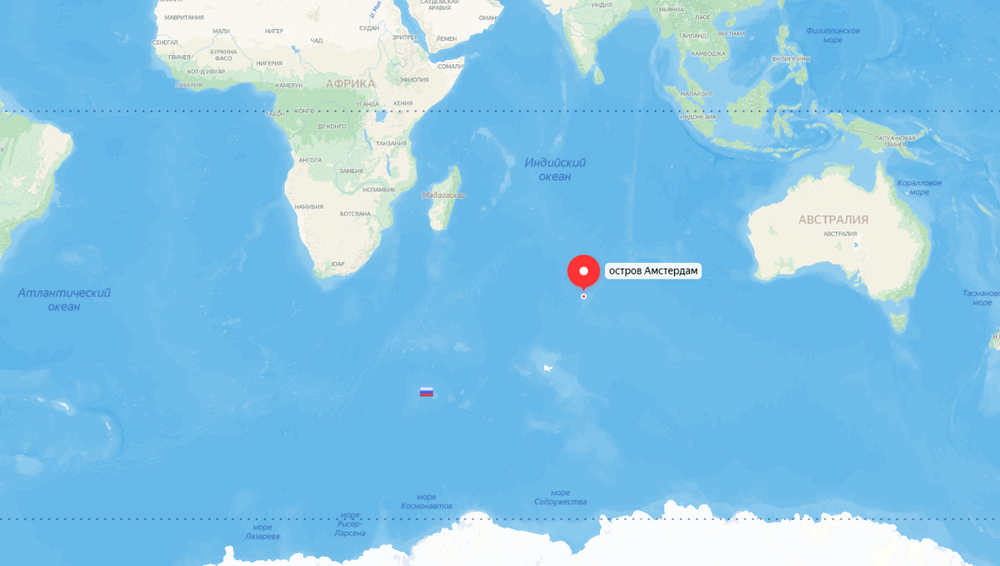
Amsterdam Archipelago on the map
By the way, they were described (rather inaccurately) by Jules Verne in his novel “The Children of Captain Grant.” But the islands were discovered back in 1522. This was done by Magellan's expedition, or rather by the captain of the only surviving ship "Victoria" Juan Sebastian Elcano. Magellan himself was already resting in Philippine soil by that time and the remnants of his expedition were hurrying home. Apparently this is why Captain Elcano did not name the islands he discovered.
This was done by a Dutch navigator a century later. Without further ado, he named the large island after his ship - New Amsterdam. And the little one received a name a few decades later in honor of St. Paul - Saint-Paul in French.
Actually, France began to own these islands, since none of the colonial European powers needed them anymore. But the ownership became purely nominal - the French had no intention of establishing settlements there. However, the islands were by no means deprived of human attention. Little Saint-Paul was especially “lucky”. On an area of 8 sq. km in the 19th and 20th centuries, truly tragic events unfolded.
Forgotten by everyone 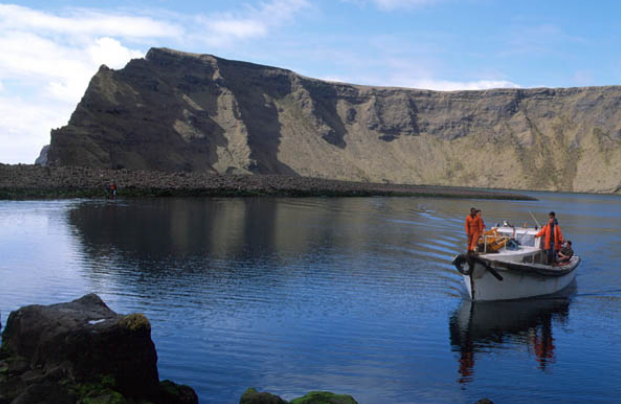
Saint-Paul Island
In 1872, the passenger ship Meagara was wrecked near Saint-Paul. 300 people were saved, and they lived on a tiny island for two months waiting for help. An American warship took them off from there, noticing them purely by accident. During this time, the passengers and crew not only survived, but even managed to build something like houses made of stone, the remains of which have been preserved in Saint-Paul to this day.
But the real tragedy unfolded on this cobblestone half a century later. In 1929, a French company decided to establish a small lobster fishing team on the island in the summer. About 30 Europeans were brought there and provided with everything they needed. At the end of the season, people were taken away along with the catch. But it turned out to be so large that there was not enough space on the ship for seven crew members. They were persuaded to stay in Saint-Paul for the winter and promised to send a boat full of supplies in two weeks. People believed, but they were simply... forgotten. Two weeks passed, then two months, and seven unfortunates fought for life on a tiny piece of land. Among them was a pregnant woman, she gave birth, but the baby lived only a month and a half. She was buried in a jam box.
Within nine months, 4 people died from scurvy. ANDThe emaciated, ragged, sick survivors were rescued only in December 1930. When they were delivered to France, a huge scandal broke out. There was an investigation and a trial. The fishing company was ordered to pay large compensation. But she filed for bankruptcy and the three captives on the island of Saint-Paul never saw the money. 
Commemorative plaque on the island of Saint-Paul/
This is the story of a tiny, inconspicuous island. However, Amsterdam itself also had its fair share of events. Although not so tragic, they still deserve attention.
Cow genocide
In 1870, a certain French peasant from Reunion Island decided to become the first colonist in Amsterdam. He landed on shore with his family, relatives and a herd of sheep and cows. However, the business of breeding pets did not take off - the logistics for the delivery of lamb and beef turned out to be too expensive in terms of costs and the price of meat turned out to be exorbitant. A year later, the unlucky farmer left the island, leaving his entire herd there. As a result, in the middle of the 20th century, a large number of rats, mice and feral cats bred in Amsterdam. And most importantly, sheep and cows, which have adapted well to the local conditions.
And if in the 19th century Amsterdam (with an area of 58 sq. km) was 80% covered with trees, then by the end of the 20th century there was almost nothing left of them. The French scientists who worked here periodically shot animals, killing 350 wild cows a year for their own needs. But this did not cause serious harm to the population. In the end, biologists sounded the alarm - there was practically no vegetation left on Amsterdam, and it was necessary to save the remaining species. 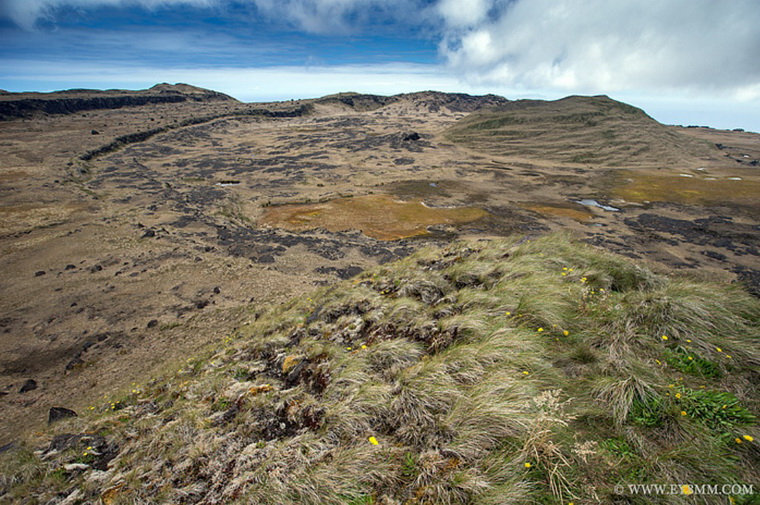
There is almost no vegetation left in Amsterdam
First, they decided to fence off areas of the forest from wild cows and sheep. Did not help. Then they wanted to do the opposite - they set up a reservation on the western end of the island, where they herded all the animals and surrounded the place with thorns. It didn’t help again - the starving cows stormed the fence and scattered around Amsterdam again. Then, in 2008, they decided to do something radical - they simply sent all the animals to slaughter, shooting them with guns. The process lasted two years, and now Amsterdam has only a dozen cows and the same number of sheep to provide food for the scientists working there.
Hell of a race and fluffy croissants
It's time to briefly talk about them. Researchers in Amsterdam are studying the Earth's geomagnetic field and monitoring the atmosphere. The colony numbers 40 people, but in the summer season it increases to 300. A small village has been built on the island, where there is everything you need. Once every two weeks, a ship sails to them, supplying them with supplies, primarily fuel. 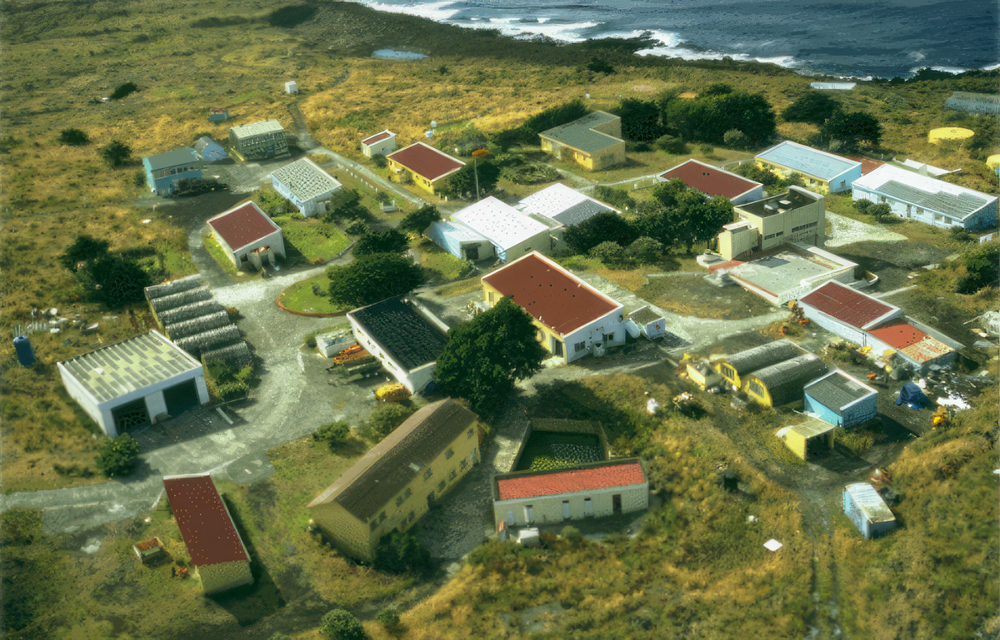
The village of Martin de Vivies on the island. Amsterdam/
It is interesting that the staff of the base mainly consists of technical personnel, and there are only seven direct scientific workers out of 40 permanent people. The rest are electricians, mechanics, carpenters, masons. And the food division of the colony could be the envy of a mediocre restaurant. The staff includes a cook, three assistants, a meat cutter (a separate position) and even a baker-pastry chef who delights the staff with fluffy croissants on weekends.
In general, the French authorities take the welfare of their citizens in Amsterdam very seriously. Firstly, you can’t just get there—you have to go through a serious psychological selection process. And secondly, the base hosts festivals and holidays, organized with one purpose - so that workers can “let off steam” and take a break from the monotonous everyday life. Special animators land in Amsterdam and begin organizing various competitions - archery, throwing eggs at a distance, hellish bicycle racing, paintball. And in the evening, the culinary team delights guests and residents with either a pancake party, a medieval-style barbecue, or gastronomic competitions. All this is done solely for the mental health of the island's residents. 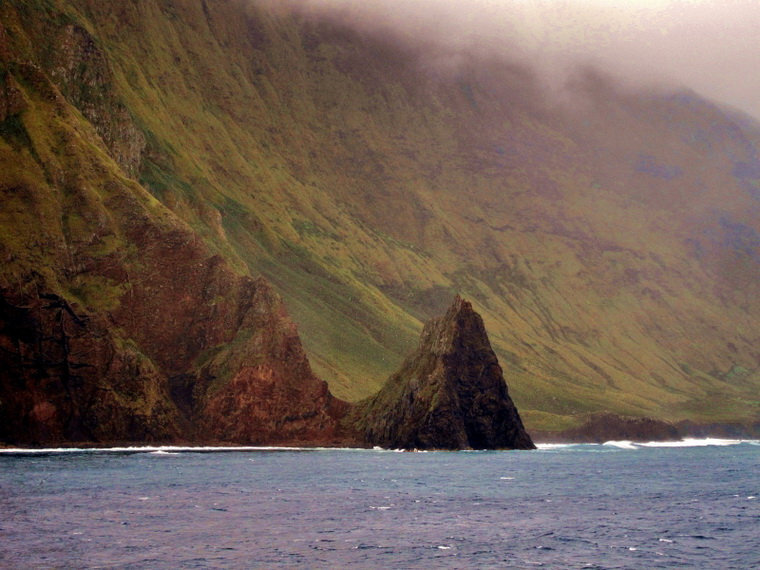
West Bank of Amsterdam Island/
There are also tourists in the Amsterdam archipelago. True, the pleasure of getting and wandering around the islands is not cheap. Prices start from 15 thousand euros, and this does not include flights and insurance. Although, in essence, there is absolutely nothing to do on the islands - the flora has been eaten by cows and sheep and will not be reborn any time soon. And they themselves were destroyed by people. And now the only inhabitants of Amsterdam and Saint-Paul are birds and wild cats, who continue to hunt them. So the whole charm of staying on the archipelagoIt lies solely in the feeling that you are almost in the very center of the Indian Ocean, like a lonely grain of sand in the cycle of nature.
